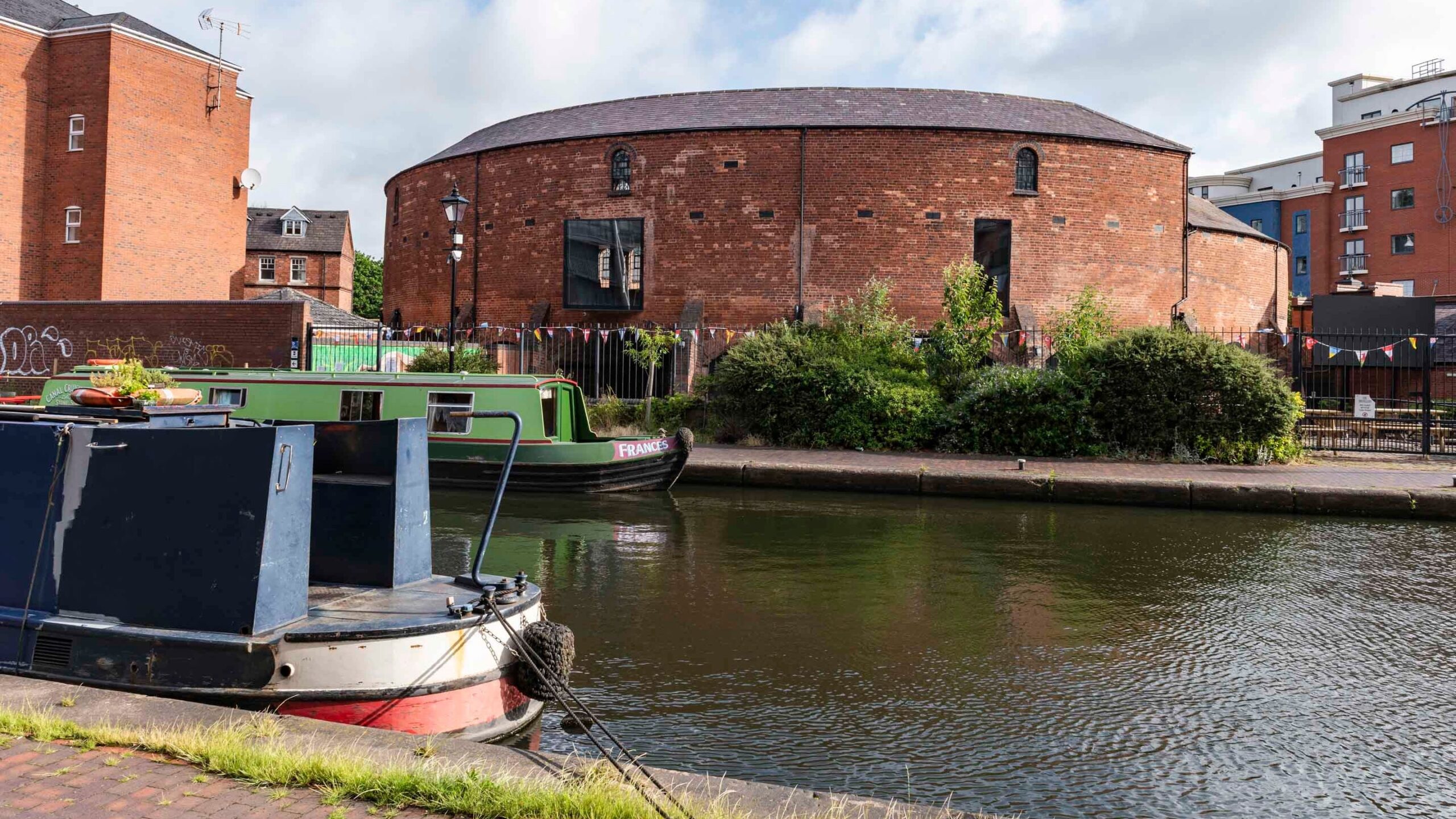The best free self-guided walking tours
Birmingham 1
Gas Street Basin – Where Birmingham’s Canal Network Converges
Standing at Gas Street Basin, you’re at what was once one of the busiest canal intersections in Britain. Today’s tranquil scene of moored pleasure boats and waterside cafes masks what was a frenetic industrial junction where the Worcester & Birmingham Canal met the Birmingham Canal Mainline.
The most striking feature is the abrupt change in water level between the two canals. This wasn’t just an engineering quirk – it marked the territory of rival canal companies who initially refused to allow their waters to mix. Look for the original guillotine lock gates, now preserved but once used to strictly control movement between the two networks. The stone walls here show deep grooves where ropes from countless working boats have worn into the fabric over two centuries of industrial use.
The warehouses surrounding the basin tell their own stories. Notice how their loading doors are arranged in vertical tiers – goods could be hoisted directly from boats into different levels of storage. The cast iron columns and brackets that supported loading cranes are still visible, their robust construction testifying to the weight of cargo they once handled. Look closely at the brickwork and you’ll spot traces of company names and trading signs, though most are now faded almost to invisibility.
Around the basin’s edge, original mooring rings and bollards remain in place. Each one is worn into distinct patterns by ropes – some show deeper grooves on one side, indicating the regular direction of strain from loaded boats. The cobblestones beside the water are different from those further back – the waterside ones are deliberately rougher to give boat horses better grip when towing heavy loads.
Below the modern bridges, you can still see the original towpath bridges, their stone surfaces worn into shallow troughs by generations of rope wear. The iron brackets that once held gas lamps still project from various walls – these enabled 24-hour working during Birmingham’s industrial heyday. Near the old brick archways, look for the remains of timber fenders that protected boats and buildings from collision damage.
This basin represented the heart of industrial Birmingham’s transport network. From here, raw materials and finished goods flowed to and from thousands of workshops and factories. Boats would have been crowded gunwale to gunwale, with teams of men and horses working around the clock to keep cargo moving. The air would have been thick with coal smoke and steam, while the sound of boat horns, horses, and industrial machinery created a constant cacophony.
For further information, see the Canal & River Trust website.
As we move towards The Mailbox, we’ll see how one of Birmingham’s later industrial buildings has been transformed for modern use…

